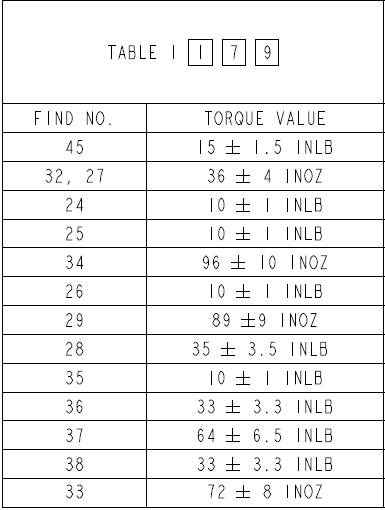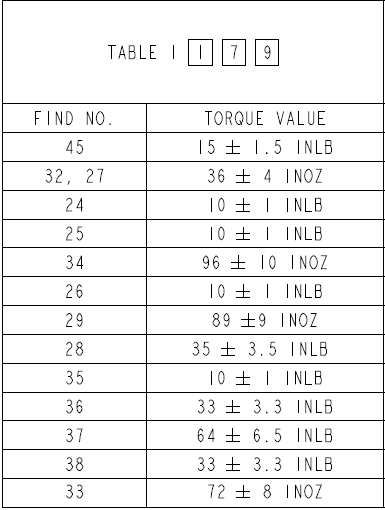Torque Tolerance
In general, what tolerance range is commonly applied to fastener torque values on drawings?
Expand Hint
Torque (also called moment or couple) is the rotational equivalent of a linear force. It is the force that tends to produce torsion around an axis.
$$$\tau = r \times F$$$
where
$$F$$
is the force,
$$\tau$$
is the torque, and
$$r$$
is the distance between where the force is applied and where the torque is measured.
Hint 2
An example of a fastener torque table from an engineering drawing:

Torque (also called moment or couple) is the rotational equivalent of a linear force. It is the force that tends to produce torsion around an axis.
$$$\tau = r \times F$$$
where
$$F$$
is the force,
$$\tau$$
is the torque, and
$$r$$
is the distance between where the force is applied and where the torque is measured.
Due to calibration range standards, torque wrench tooling imperfections, and inaccuracies with human operation, it is common practice to apply a ±10% tolerance to fastener torque requirement. An example of a fastener torque table from an engineering drawing:

±10%
Time Analysis
See how quickly you looked at the hint, solution, and answer. This is important for making sure you will finish the FE Exam in time.- Hint: Not clicked
- Solution: Not clicked
- Answer: Not clicked